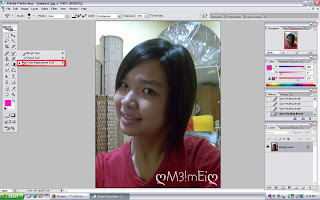Thank you everyone for your wishes.
Here's the answer for the guesses.
My age =
*
**
***
****
*****
People say, it's the adult age..
Ahaha, now you know.
May all of you out there be blessed with happiness all day long.
Ch3r!sH Every Mag!caL Mom3nT & You'lL Nev3r Regr3T
Thank you everyone for your wishes.
Here's the answer for the guesses.
My age =
*
**
***
****
*****
People say, it's the adult age..
Ahaha, now you know.
May all of you out there be blessed with happiness all day long.

 These two are my recent pics...
These two are my recent pics...
Happy Birthday to you!
Happy Birthday to you!
Happy Birthday dear Mei Mei! <3>
Happy Birthday to you...
Close your eyes! Make a wish!
.
.
.
.
.
.
.
.
.
.
.
.
.
.
.
.
.
.
May all you wishes come true...!!!
Today is your special day, my princess Sister! Che Che got this animated birthday card for you. Check this out sweetie!
Barbie also got Mei Mei a pinky birthday cake loaded with all my love for you. My photoshop skill is terrible, but I spent all my heart and soul to do it, and it is for you, my great sister and friend.




 Almost forgot to take pic..
Almost forgot to take pic..
 How old is she?
How old is she? This is a special promotion food introduced by the waiter. I don't know what is it called, but I think it is imitating chicken-chop or something like that. It really tasted like real meat.
This is a special promotion food introduced by the waiter. I don't know what is it called, but I think it is imitating chicken-chop or something like that. It really tasted like real meat. Toufu with century egg. Eggie? vegetarian can eat eggie?
Toufu with century egg. Eggie? vegetarian can eat eggie? Best dish of the night=) I think, haha
Best dish of the night=) I think, haha Mushrooms..I just saw different types of mushrooms in the new mall, & ate it last night=)
Mushrooms..I just saw different types of mushrooms in the new mall, & ate it last night=)ღ Pick A Color ღ
See what is your color for today =)
PURPLE ~ feeling a little lonely.
WHITE ~ having problems.
GREEN ~ just relaxing.
YELLOW ~ addicted to candy.
PINK ~ feeling so happy.
GRAY ~ having a boring time.
BLACK ~ craving for chocolate.
AQUA ~ hyper hyper.
ORANGE ~ not in love.
SKY BLUE ~ calm.
RED ~ happy because the person you love loves you back.
TURQOISE ~ you like someone.
SILVER ~ thinking of someone.
MAGENTA ~ heart broken.
BROWN ~ the person you like doesn't like you.
PEACH ~ your not bored. you got a lot of fun activities to do.
GOLD ~ saving money for this vacation.
CHOCOLATE ~ your really in love and you cant stop thinking about the person you love.
HOT PINK ~ you feel hot.
BLUE ~ you like someone but you don't know how that someone feels about you.


 Pity my cutie here, she accompanies me all the time I study, now the arm BROKEN?!
Pity my cutie here, she accompanies me all the time I study, now the arm BROKEN?!
 I like the display & set up of things in this mall=)
I like the display & set up of things in this mall=) See, there are so many different 'species' of MUSHROOMS!! ( I miss YOU, gal! )
See, there are so many different 'species' of MUSHROOMS!! ( I miss YOU, gal! ) 
 Even potatoes have different colors. LOLX!!
Even potatoes have different colors. LOLX!!
 Told ya!! see? They were wearing pyjamas, hahaha!!
Told ya!! see? They were wearing pyjamas, hahaha!! Sleepy @.@
Sleepy @.@












 I Lurv Ti Amo!! I must have this book!!! I wish to own it by myself.
I Lurv Ti Amo!! I must have this book!!! I wish to own it by myself.



 These are the steel strings, I'm sure you've seen these in the Grand Piano, if not, then in Tom & Jerry, haha!! When Tom chases Jerry=P
These are the steel strings, I'm sure you've seen these in the Grand Piano, if not, then in Tom & Jerry, haha!! When Tom chases Jerry=P
 Piano pedals, from left to right:
Piano pedals, from left to right: Grand Piano
Grand Piano Upright Piano
Upright Piano

Created by OnePlusYou - Free Dating Site